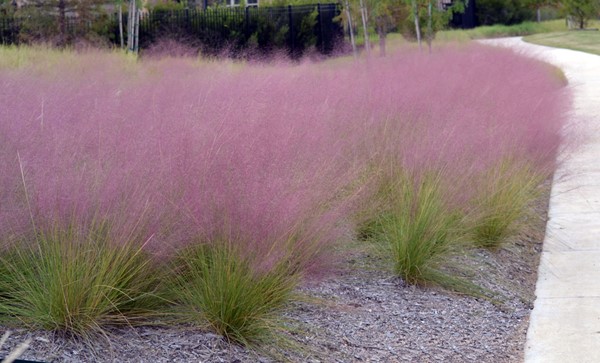
Xeriscaping, or dry-scaping, is a method of gardening intended to minimize the need for irrigation and ongoing watering. You can develop a xeriscape in any climate, using the right plants, but it most commonly appears in drought-prevalent areas with more mild winters and hot summers. If you live in a desert or southern climate, this might be the right solution for you. Xeriscaping is an excellent option for those dealing with yards that are tough to irrigate. They're also a fantastic cost-saving solution to avoid needing any additional irrigation for your yard, and for lowering water usage throughout the life of your yard.
In this series discover some great go-to plants to consider when building your xeriscape plan. One of the best types of plant you can employ in your xeriscape is ornamental grasses. Ornamental grasses grow big and full making them tremendously useful for fleshing out your xeriscape. Add a selection of different grasses for variation in color and size throughout your landscape. Here are some beautiful species to consider when designing your xeriscape.
Purple Fountain Grass — Of all ornamental grasses this fountain grass is one of the most popular and preferred grasses for gardens of all types and is perfect for your xeriscape. It is a perennial that loves full sun and only occasional watering. You can plant Purple Fountain Grass in all seasons and enjoy rusty, rose and purple colored plums from summer through fall. This plant combines very well when clumped with other drought-tolerant plants but can also stand on its own as a statement piece in your landscape.
Mexican Feather Grass — This annual grass is a very light wispy and finely textured grass. It produces green and brown coloring year-round with small flower heads through Summer. Mexican Feather Grass, a highly drought-tolerant plant, prefers full sun and dry soil. This grass has scant watering needs and is very sensitive to water. For best results keep the plant dry. Though it is an annual, this grass reseeds on its own making it an excellent option for creating coverage in sloping yards or meadows. It also adapts very well to flower beds and containers for more controlled growth.
Blue Oat Grass —The silver-blue leaves of this grass are a striking addition to any landscape. Blue Oat Grass is drought-tolerant and even salt resistant, allowing it to thrive in warm environments with dry soil. Considered semi-evergreen this beautiful grass requires little maintenance while providing color year-round and creating beautiful plumes through the summer.
Artificial Turf — A significant part of xeriscaping involves reduced lawn areas in your yard. You want to create a sustainable xeriscape, but you also need some area of your yard for children or pets to run around. So maybe it's not an actual plant, but artificial turf grass is an excellent solution for your lawn. Add a small amount of turf for the final touch on your perfect eco-friendly yard. The initial cost of artificial grass is higher than live turf, but the ongoing maintenance and environmental costs saved on watering, fertilizing and mowing are significant. Before you start planting ornamental grasses, flowers and trees determine whether or not you need an area of turf.
Now that you have some essential grasses to start your xeriscape plan read on to the next part of this series for some beautiful flowering plants to add for pops of color in your landscape.